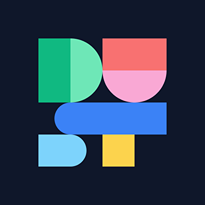Vanna AI Review 2025: What It Is, How to Use It & Is It Worth It?
Translate natural language questions into SQL queries.

Natural language to SQL conversion
Open-source customization
Free tier with GPT-3.5, Paid tier with GPT-4
Vanna AI Description
Starting price
0.53
- Free plan
- Paid
- Free trial
Vanna AI Detailed Review
Vanna AI stands out in the developer tools space by offering a unique solution to a common problem: making database queries easy for those who aren't SQL experts. The tool uses AI to translate natural language questions into SQL code, which can then be run against a database. This is particularly helpful for business analysts, data scientists, and developers who need quick insights from their data but may not have the time or expertise to craft complex queries manually.
One of the main advantages of Vanna AI is its ease of use. The process is straightforward: you train the RAG model with SQL, DDL, and documentation, and then you can start asking questions. The training data you provide enhances the model's accuracy, especially with large and complex datasets. The more you use Vanna, the smarter it gets, learning from the augmented training data. The tool's design prioritizes security, as your database contents are never sent to the LLM; only schemas, documentation, and queries are seen by the metadata storage layer.
Vanna AI's free tier is quite generous, offering users the ability to experiment with the foundational GPT-3.5 model. However, for those who need more power and flexibility, the paid tier unlocks the latest GPT-4 model, which is known for its improved performance on complex tasks. The paid tier is available on request and priced at a rate of $0.53 per query.
The open-source aspect of Vanna AI is a double-edged sword. On one hand, it allows for extensive customization and integration with any LLM or vector database, which is a boon for enterprises with specific needs. On the other hand, it might be daunting for less tech-savvy users or smaller teams without the resources to implement and maintain the system on their own infrastructure. The availability of hosted options and a Slack bot can mitigate this to some extent.
In terms of drawbacks, the rate limits on the free tier might be restrictive for users with high volumes of queries. Additionally, while the tool is designed to be self-learning, the quality of the generated SQL will heavily depend on the quality and quantity of the training data provided. This means that there might be a significant upfront investment in time and resources to train the model effectively.
Vanna AI's documentation and support seem to be robust, with a clear commitment to helping users get the most out of the tool. The video walkthrough, although slightly dated, and the GitHub repository provide a good starting point for new users. The promise of email support and enterprise customization in the paid tier suggests that Vanna AI is serious about catering to the needs of larger organizations.
In conclusion, Vanna AI is a powerful tool for those looking to bridge the gap between natural language and SQL. Its free tier makes it accessible for individuals and small teams, while the paid tier offers the scalability and customization that larger enterprises require. The open-source nature provides flexibility but also requires a certain level of technical expertise to fully leverage. As with any AI tool, the output is only as good as the input, so users must be prepared to invest in training the model with quality data.
Similar AI Tools

Dust
Developer Tools
Streamline the creation and deployment of large language model apps.

Replicate
Developer Tools
Run and fine-tune machine learning models in the cloud.

Imagga
Developer Tools
Enhance applications with advanced image recognition and analysis.

Monster API
Developer Tools
Access generative AI models without managing GPU infrastructure.